SECTION FIVE:
The “heritage” panel honors all the cultural traditions in our community constellation highlighted by a pair of Folkloric dancers.
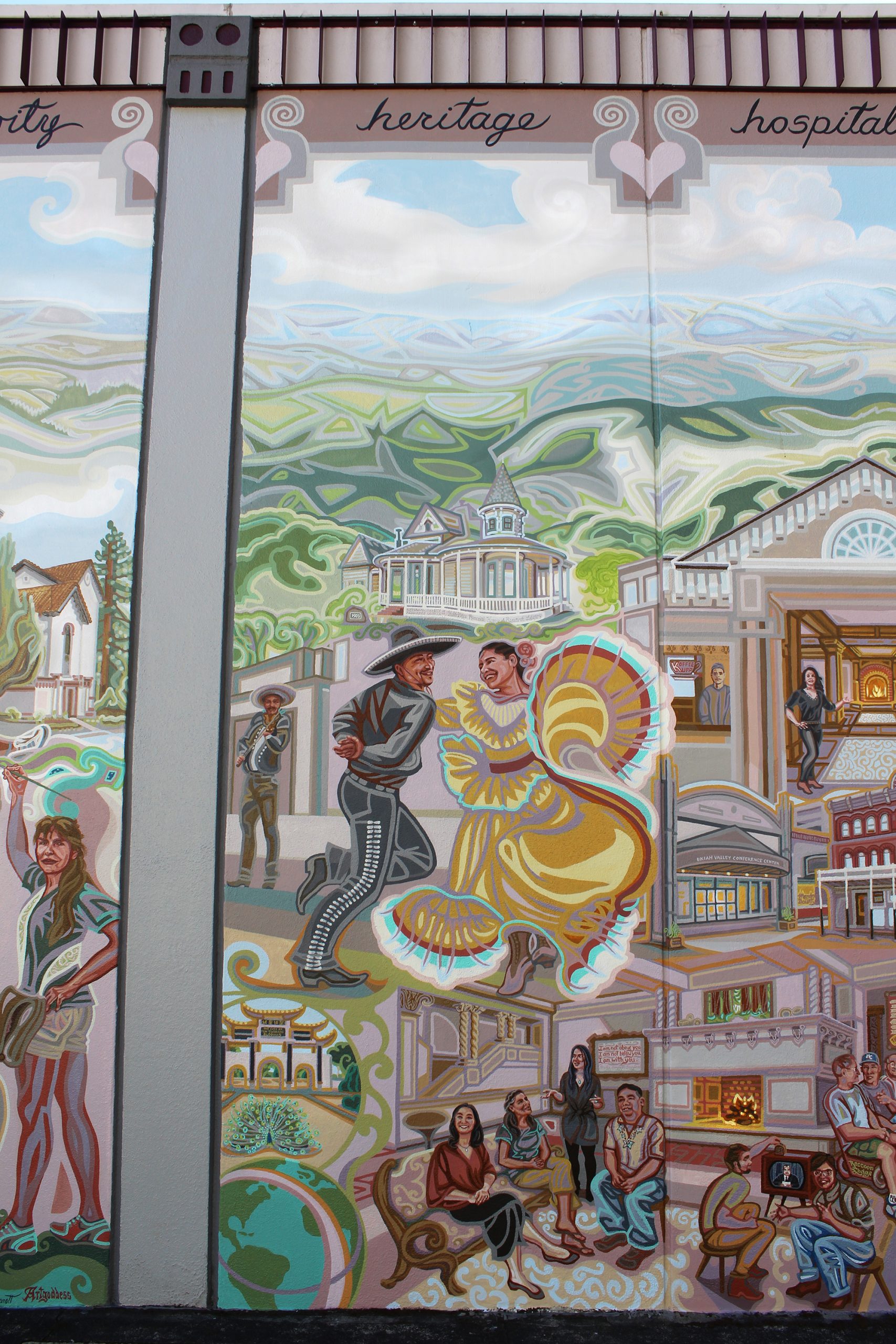
The original sketch contained just the two dancers in the foreground.
I scaled the figures to ¾ life size, similar to my self-portrait and other foreground figures in creativity to the left. I placed them up high so the extra surface was at the bottom. This is spatially counter-intuitive but allowed me to link with the neighboring panel in order to create a wide setting for all the new people I wanted to include!

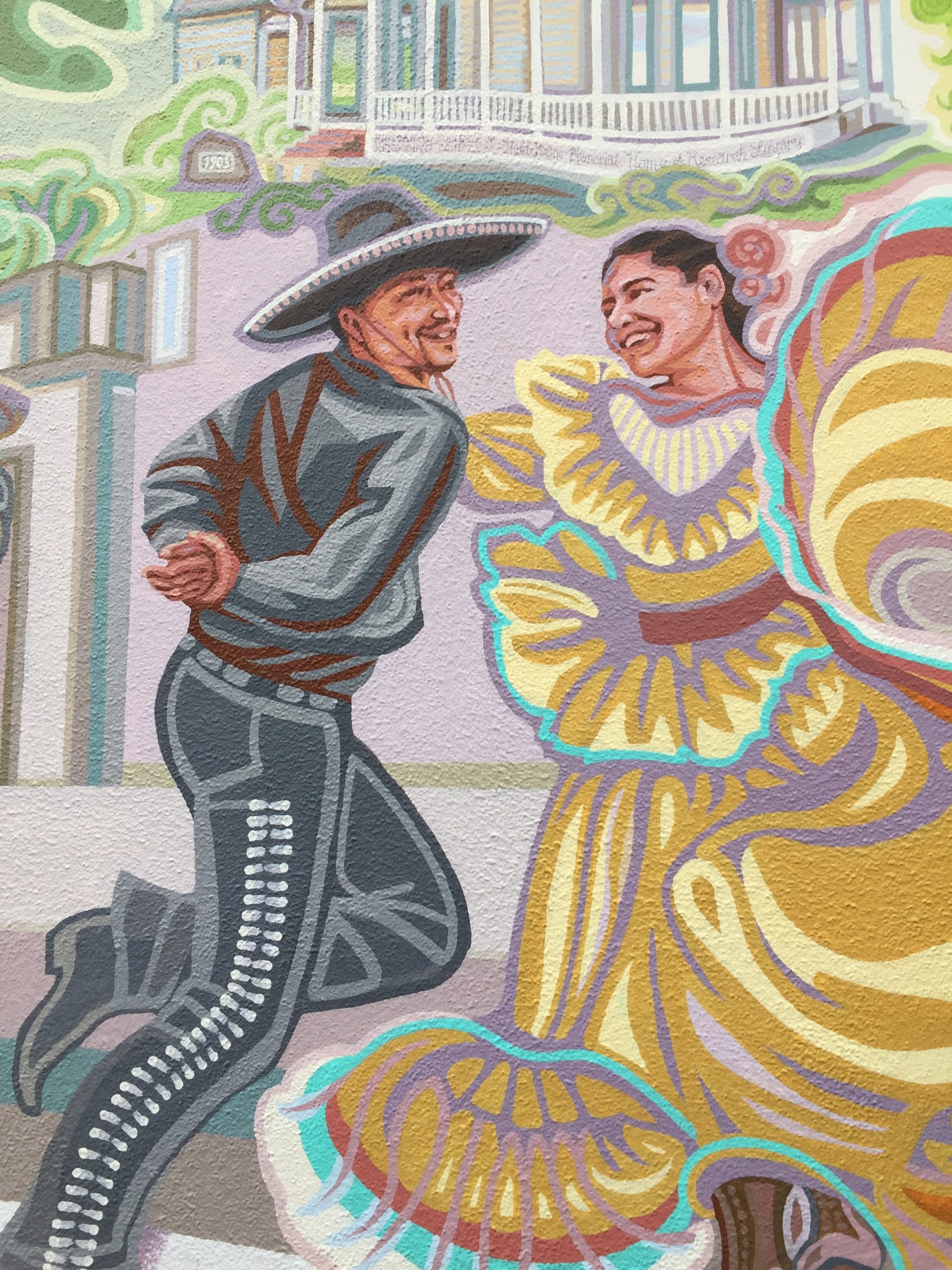
I had heard about Juvenal Vasquez who teaches folkloric dancing at Mendocino College. He and his wife Norma have been active in the Ukiah dance community since 1982. The figures in my sketch had to be them!
Ballet Folklórico (“folkloric dance” in English) is a collection of traditional Mexican dances that emphasize local folk culture with ballet characteristics. The art form has its origin in the ceremonial and social dances of indigenous people. Of course, all the groups in our community have cultural heritage. I chose Ballet Folklórico for the mural to honor the importance of Hispanic tradition in our area and because it is so visually compelling!
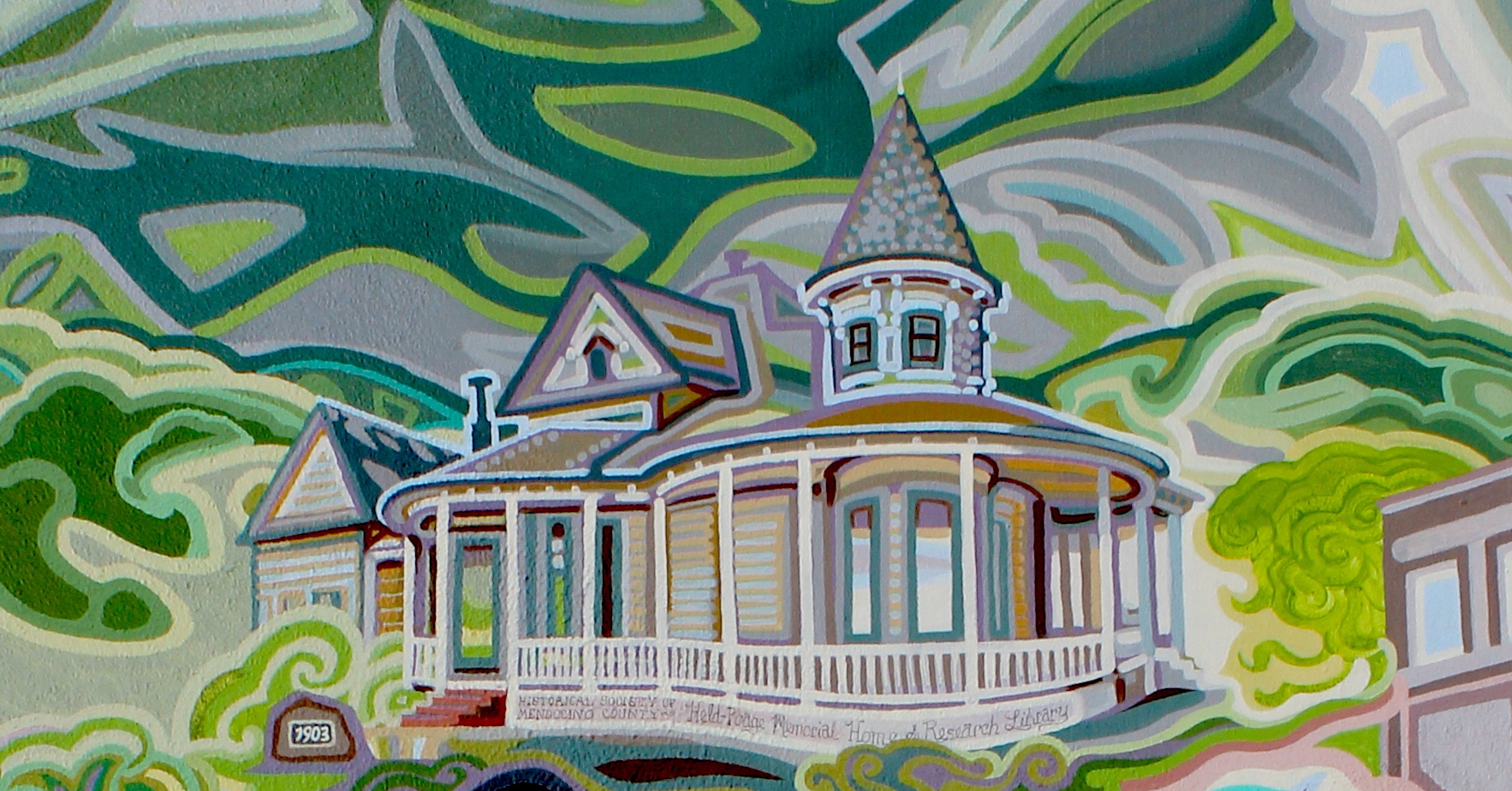
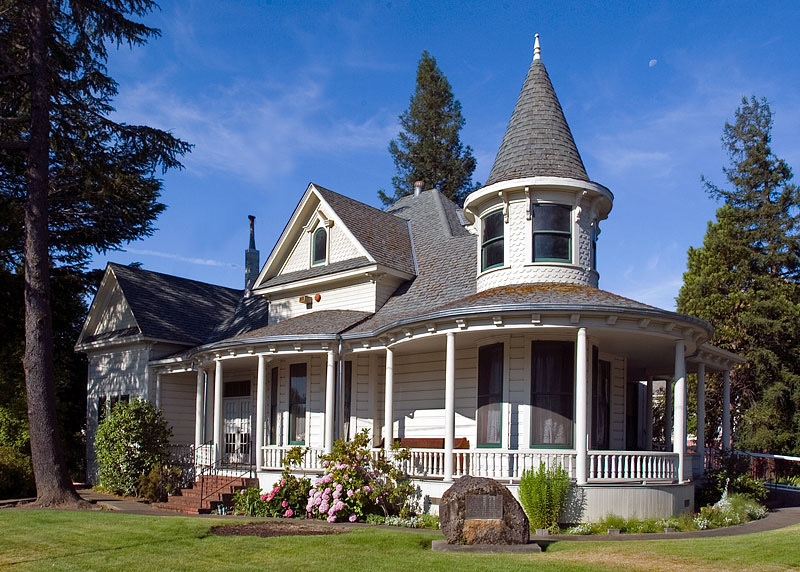
There are numerous beautiful, historic houses in Ukiah. I depicted this one because the family of Judge William Held and Ethel Poage donated it to the Historical Society of Mendocino County (HSMC) so it represents the preservation of heritage as well.
The Held-Poage family loaned the house to the Historical Society in 1969, saying if the group survived for 20 years, the house would be a gift. Highly motivated, they embarked on their mission of collecting, storing and sharing items of interest. After the two decades had passed, the house was signed over to the Society, which is now in the process of restoring it as a living history museum.
For the space below the dancers I envisioned a group of people of diverse heritage coming together for a thoughtful discussion. Four local people came to the mural to pose right in front of the future scene:
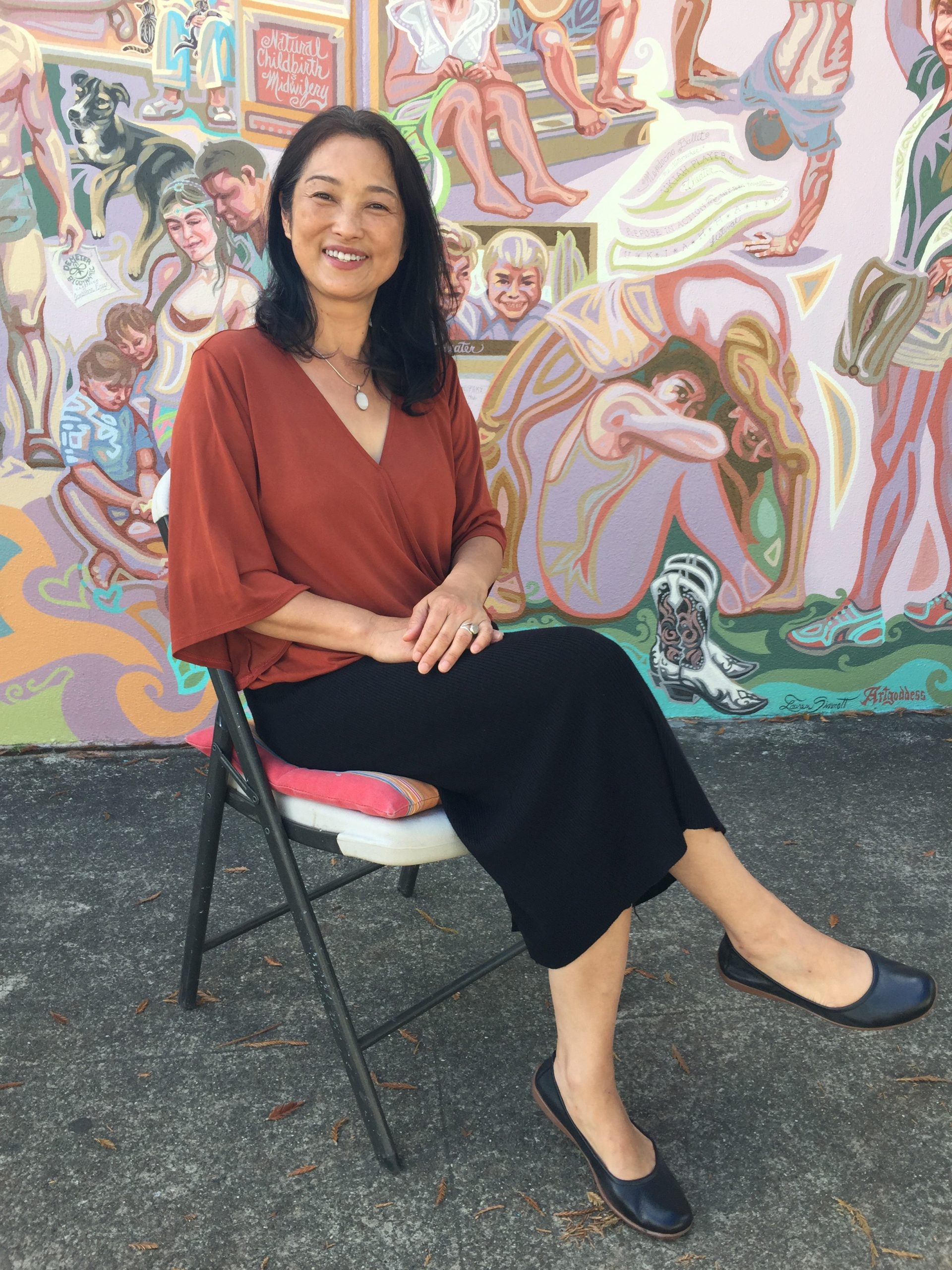
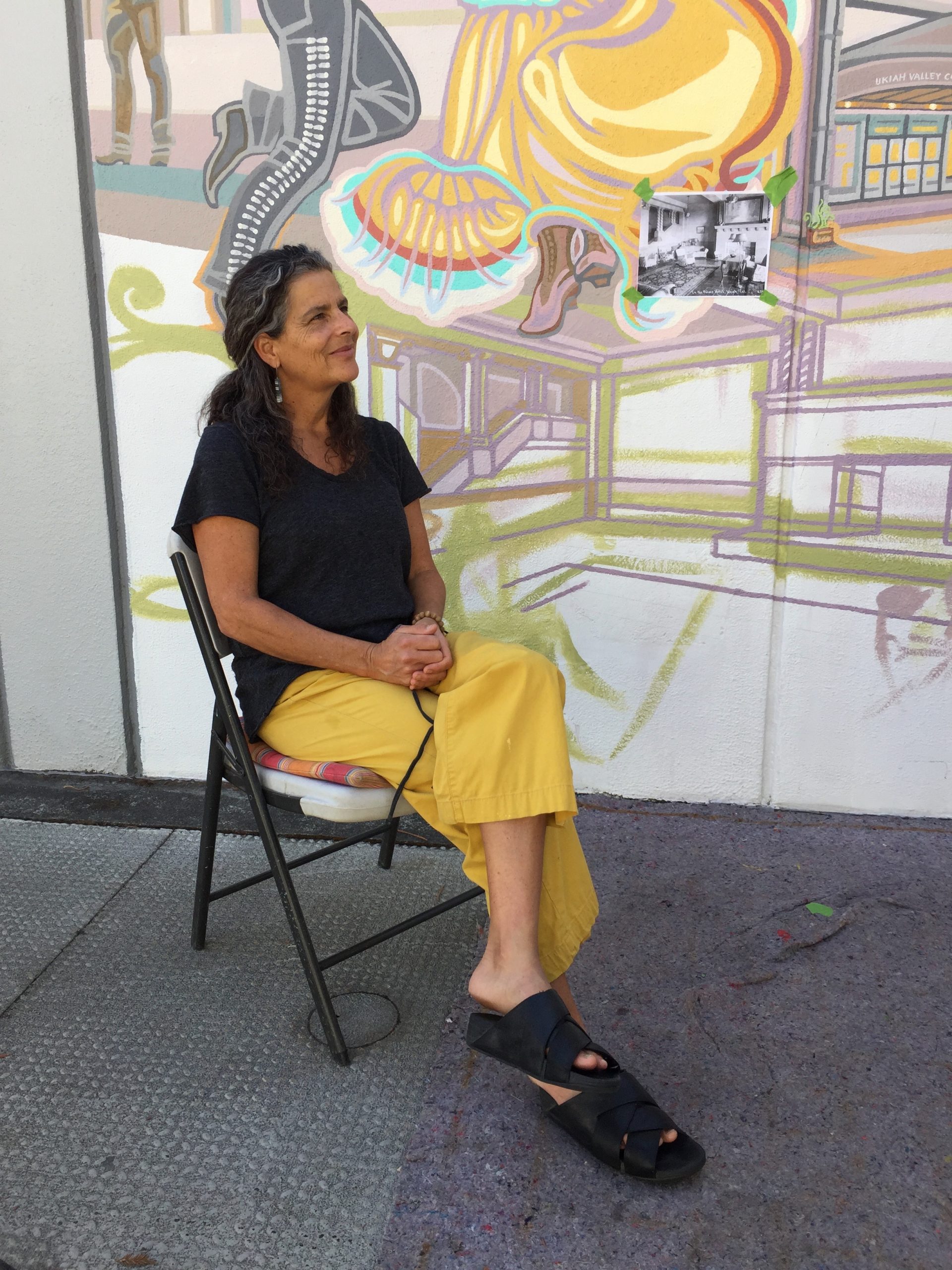
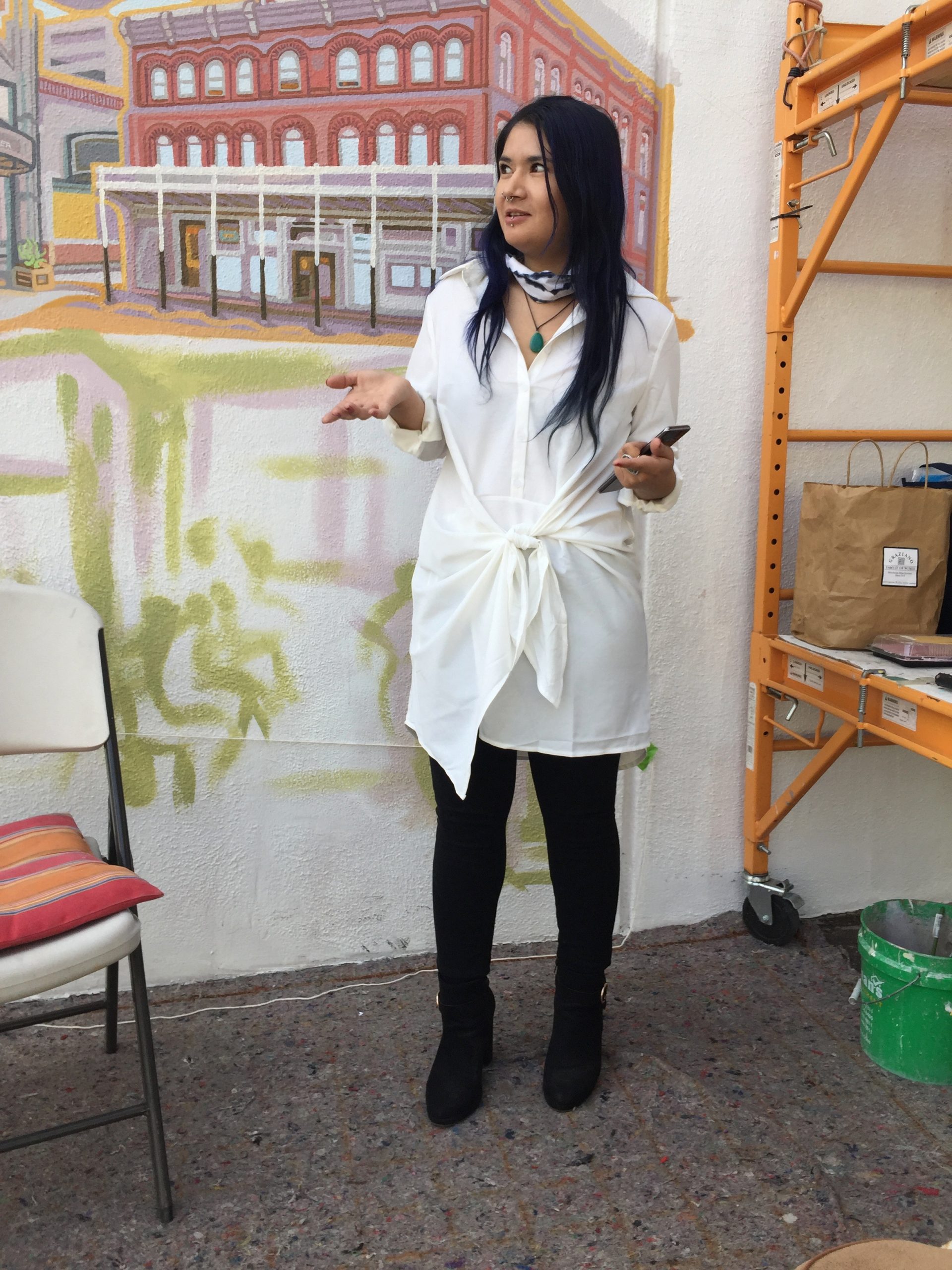
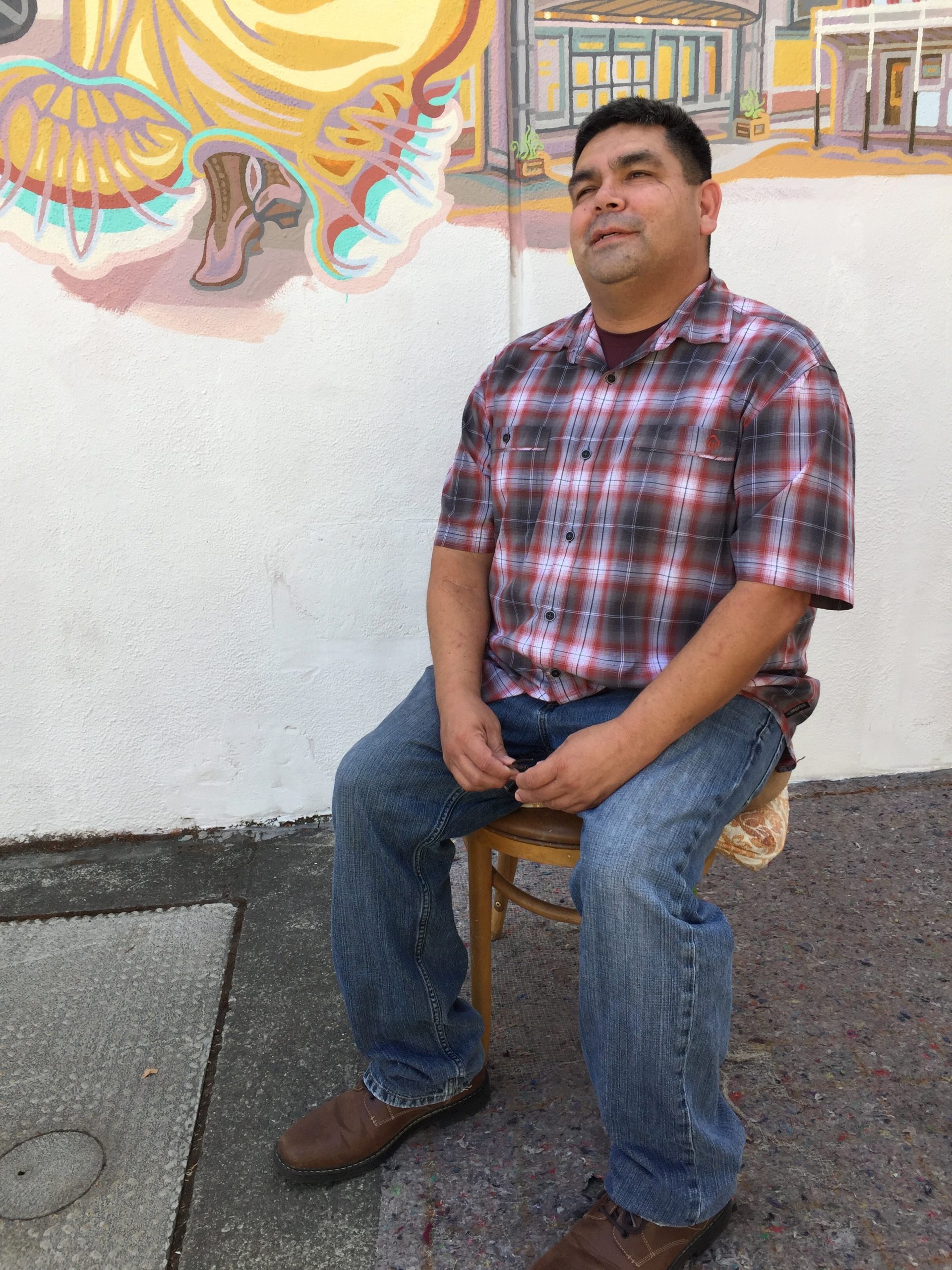
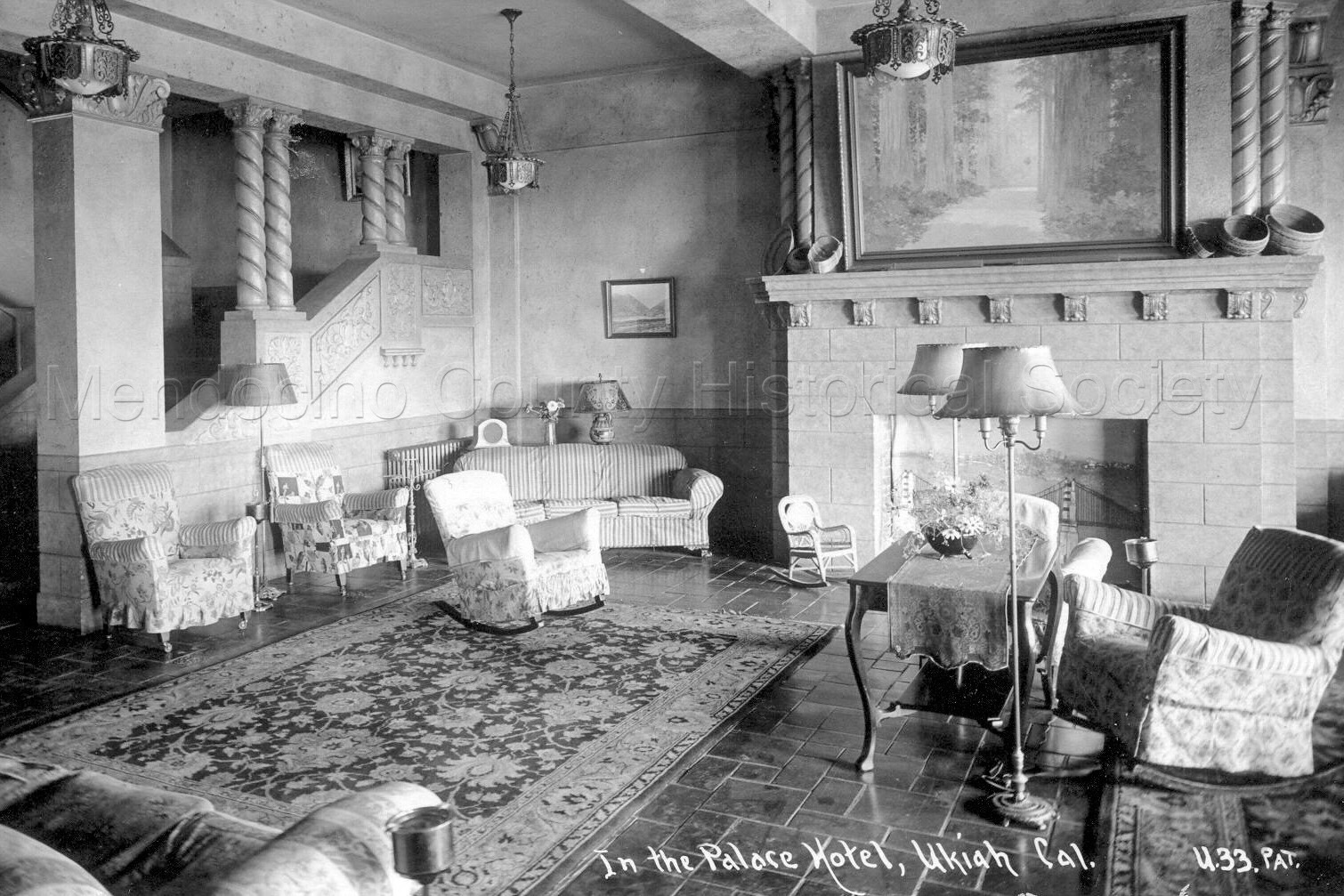
The historic Palace Hotel was the heart of hospitality in Ukiah for many years after it was constructed in 1891. I depict it from three views in the next panel, hospitality, with this lower scene spreading across both panels, and into a third.

Who are these members of the community?
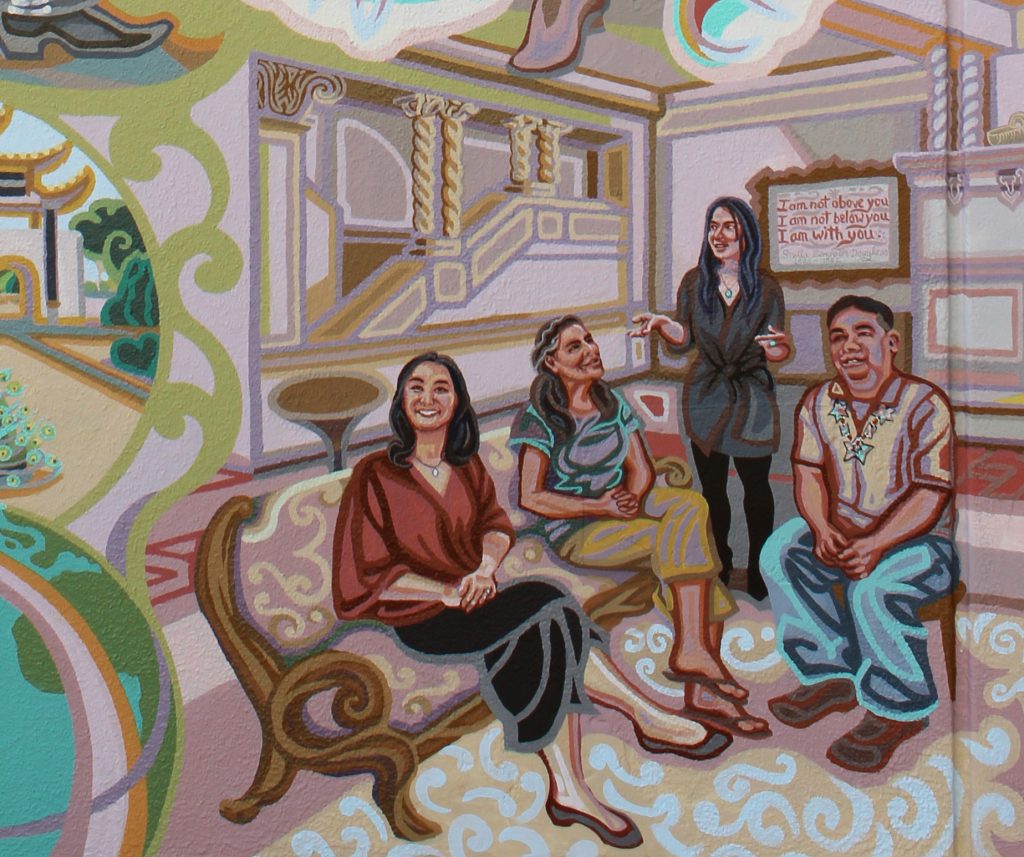
- Naoko Sakane owns and manages a favorite local sushi restaurant Oco Time which embodies her family’s Japanese heritage and promotes peace.
- Mari Rodin, of Russian Jewish family origin, served on Ukiah’s City Council and as Mayor while building a grant-writing and program planning business.
- Rachel Ebel is a mom, writer, radio dj, dining supervisor and photographer who has worked all around Ukiah.
- Gabriel Ray is a member of the Scott’s Valley Band of Pomo Indians and works with the Pinoleville Pomo in mental health, substance abuse, and suicide prevention.
In the lower left corner of the panel I painted the globe of the earth criss-crossed by interwoven ribbons representing the strands of cultural heritage that come from all over the world. For instance, Ukiah is home to three monasteries, which is astonishing for an American city of its size (pop. 16,000). They are:
- The City of Ten Thousand Buddhas, an international Buddhist monastic community, one of the largest in the US.
- Abhayagiri, a Buddhist monastery in the Thai Forest tradition of Ajahn Chah.
- Holy Transfiguration Monastery, a Byzantine Catholic monastic community of men of the Ukrainian Church.

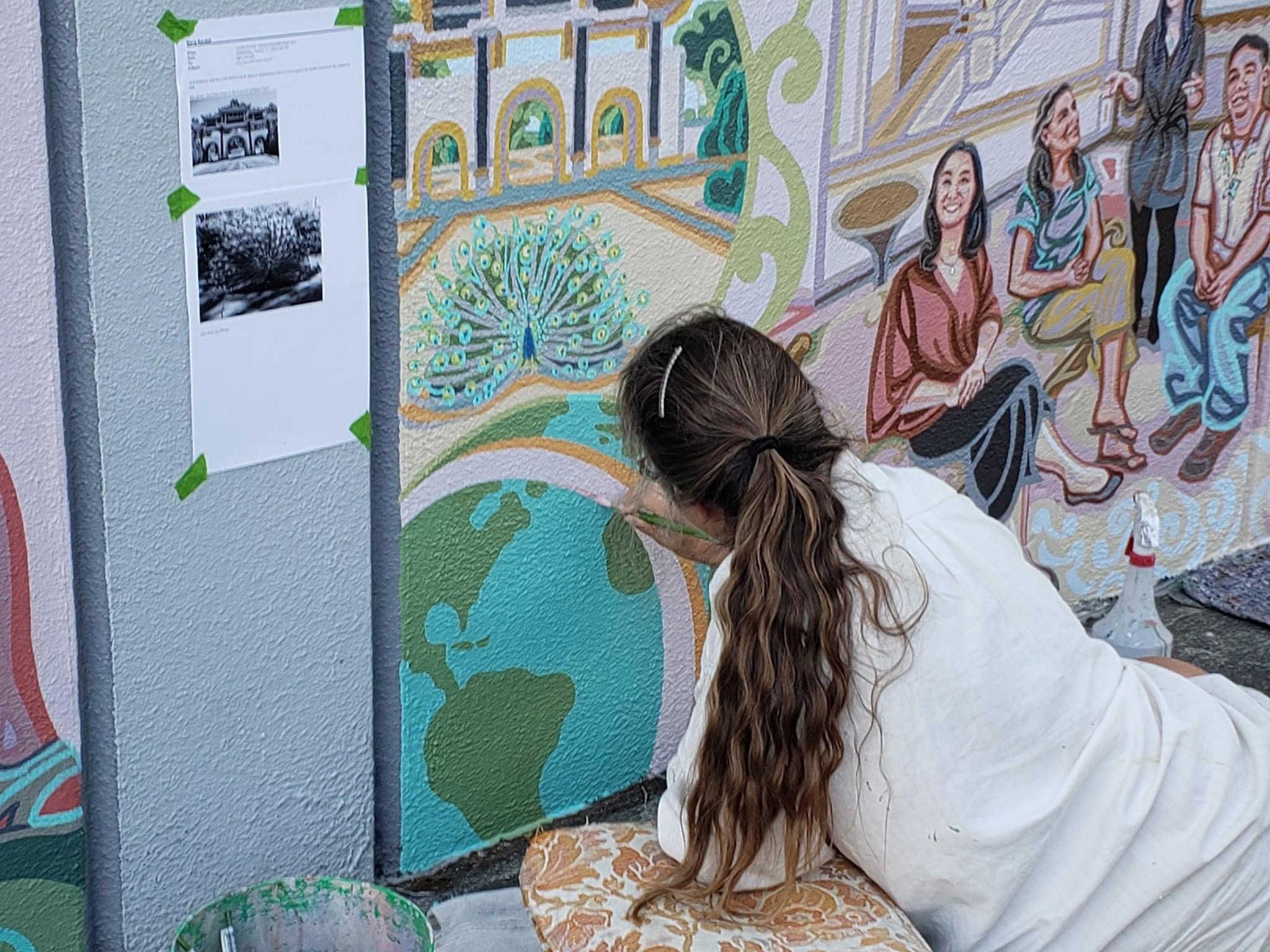
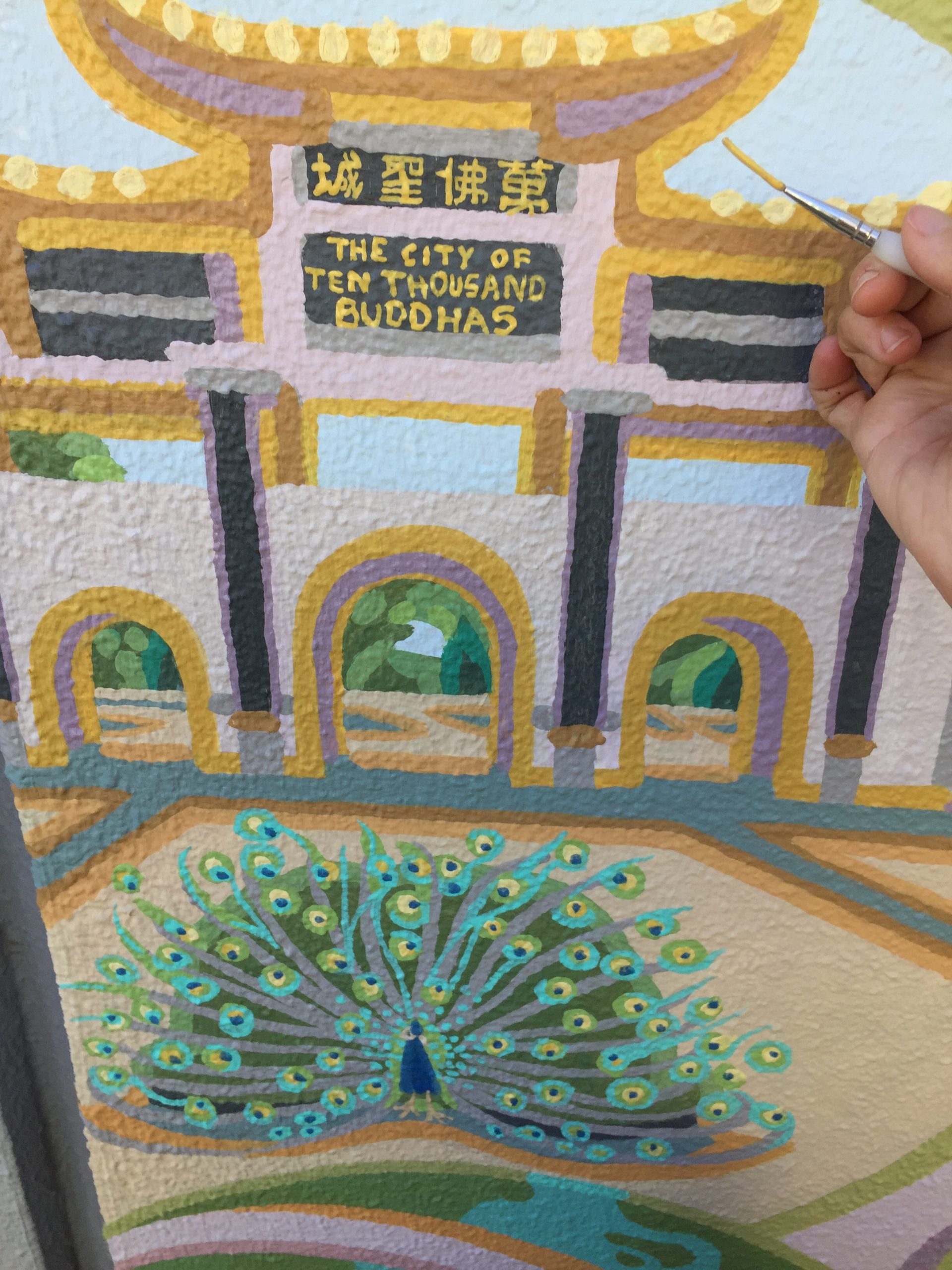
In the circle above the globe, I painted the gate to the City of Ten Thousand Buddhas, the most visible and frequently visited of these communities. Peacocks roam the monastery grounds and a male appears here.
My son Ian, who studied Mandarin at Taiwan Normal University, helped me with the Chinese lettering, which is written traditionally, from right to left.
In the next panel, you will see much more about the Sandelin family of Finnish heritage that ran the Palace Hotel. But one story is represented here. When the Sandelins took charge of the Palace in 1904, they had three young children. One daughter, Stella, lived her later years in the hotel.
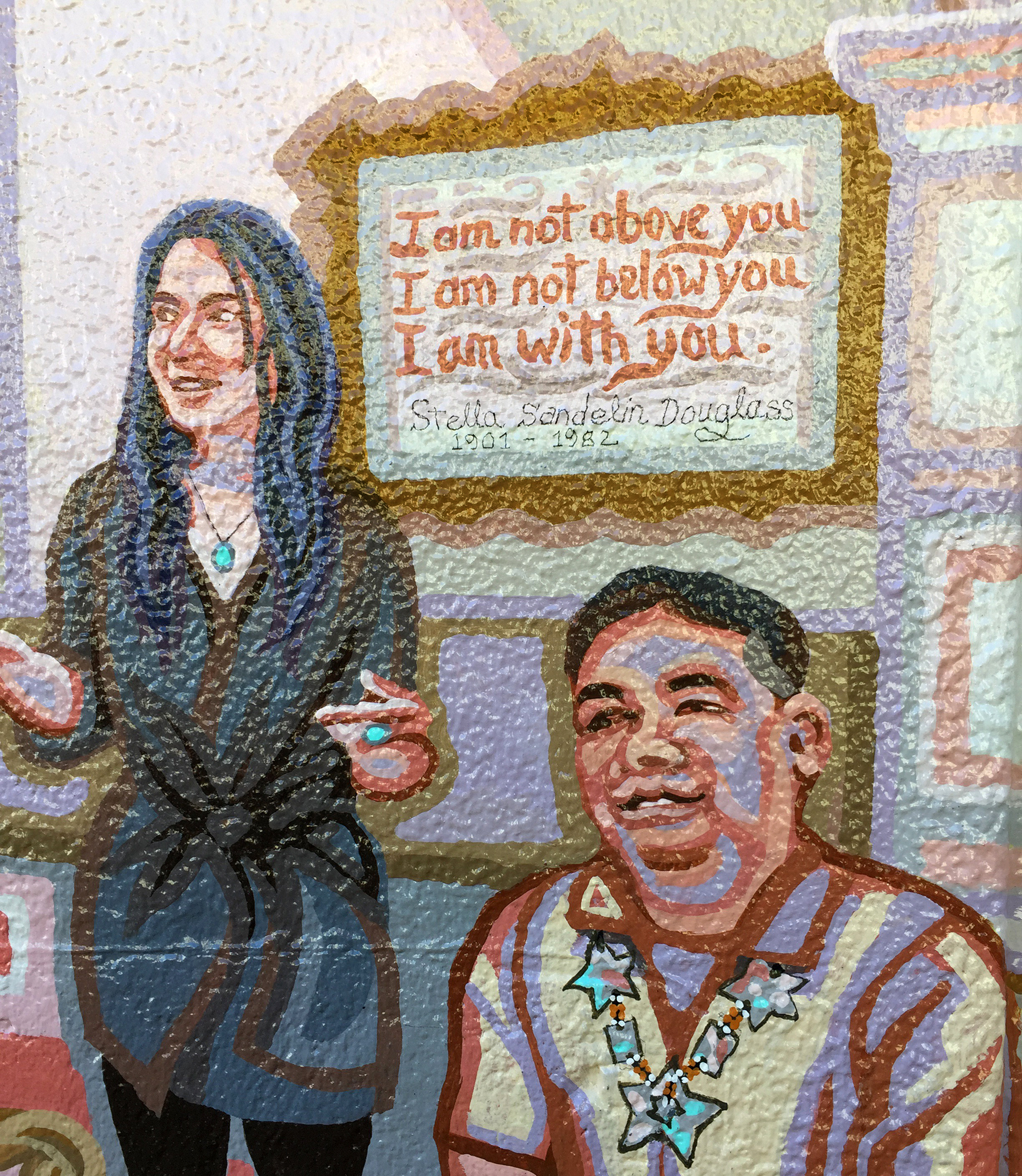

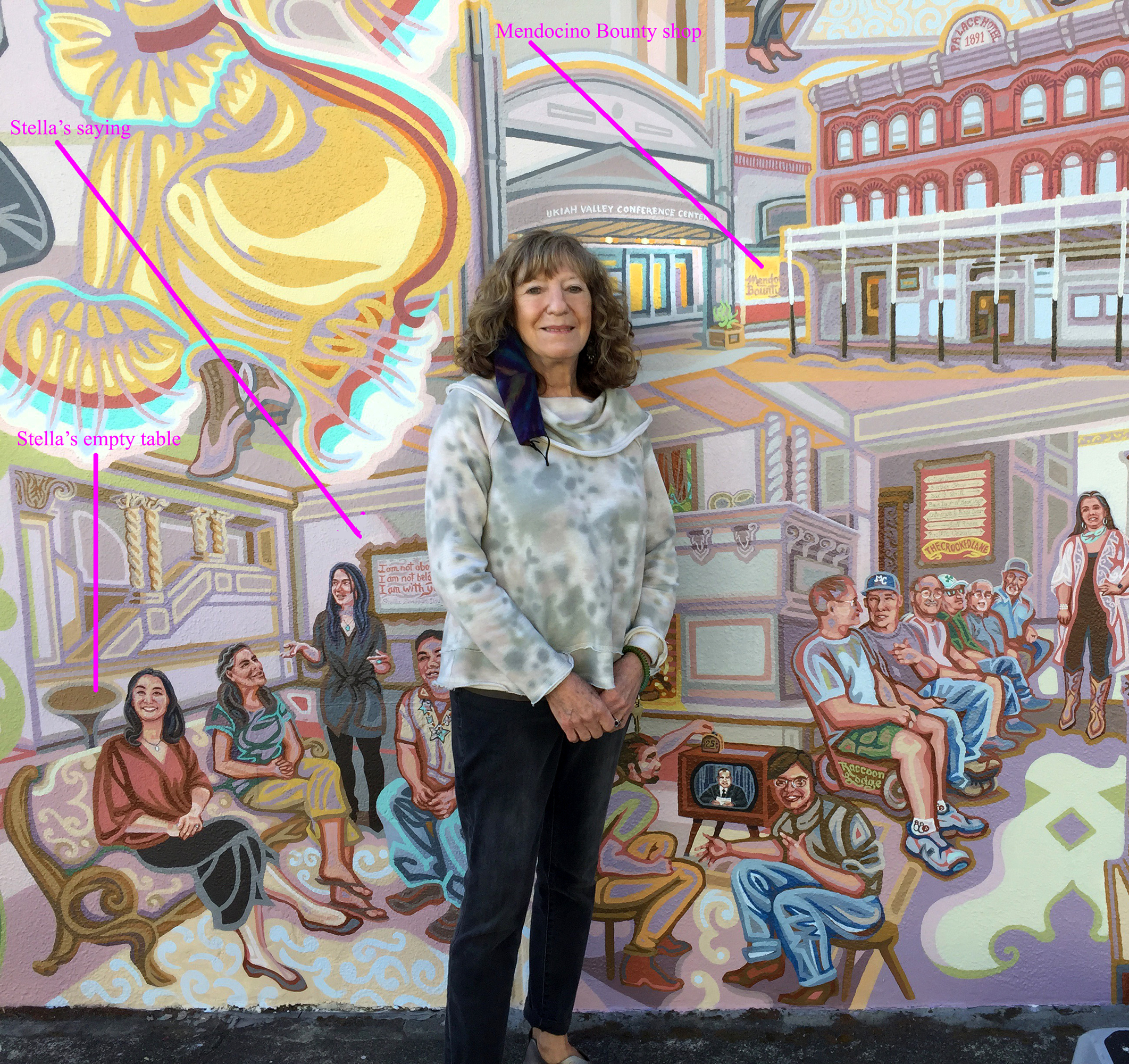
Local business owner Karen Record (of Mendocino Bounty) worked her very first job during her teens at the Palace and she remembers that Stella would come down to the parlor (seen above) every day at 5pm for her cocktail. She was vivacious and funny, always sitting at her special table by the stairs. Karen remembers when Stella passed away, the staff continued to save her empty table for her. Stella had a beautiful saying that informs all the content in this panel:
“I am not above you. I am not below you. I am with you.”
Stella Sandelin Douglass, 1901 – 1982
Up next: